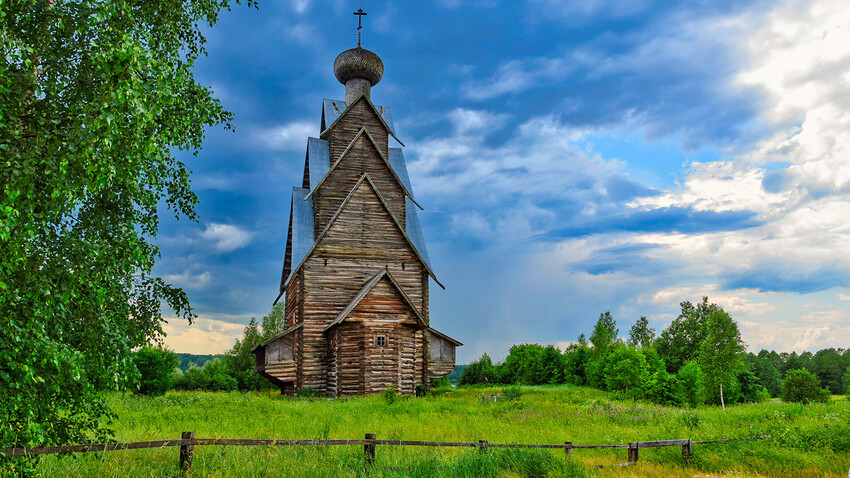
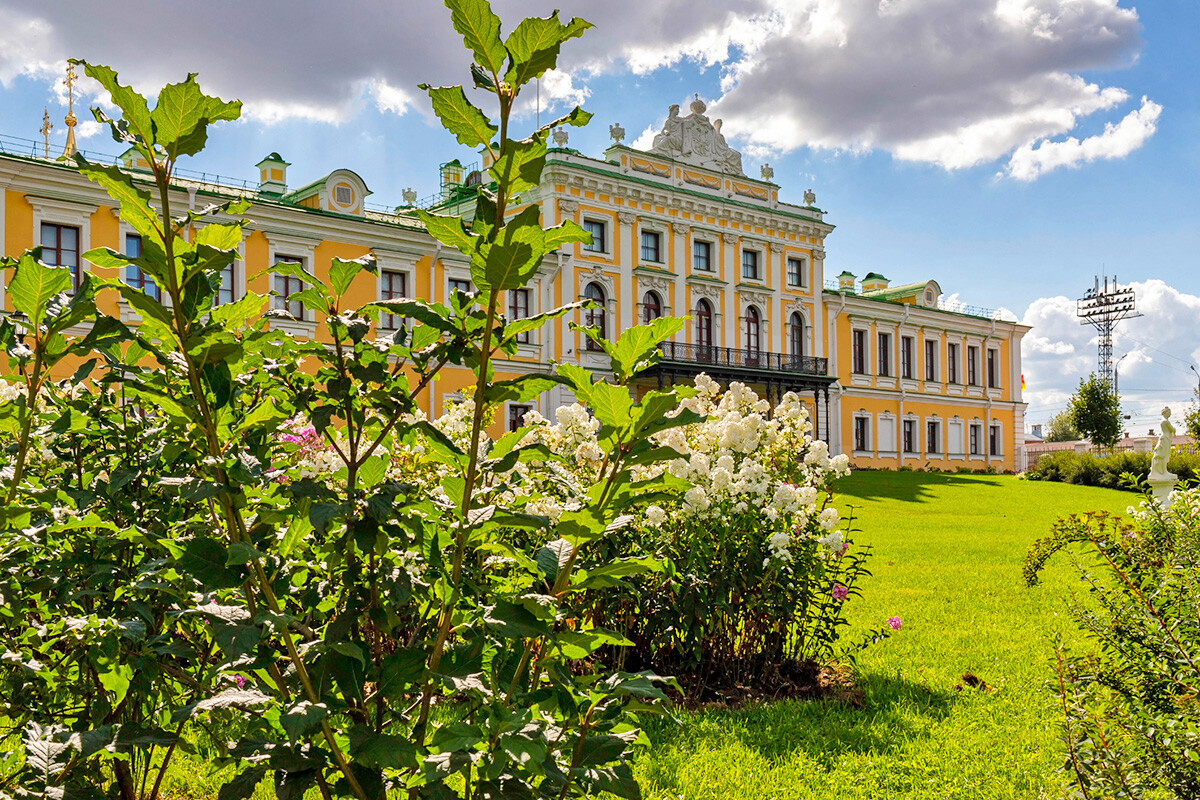
The city was founded on the Volga River in 1135. It’s 12 years older than Moscow and even competed to become the capital of Ancient Russia. Today, it is a major regional center with a population of around 414,000 people.
Travelers from one capital to the other would often stop in Tver. Empress Catherine II even had a travel palace built in Tver so as to have somewhere to rest along the way. Now, it houses the Tver Regional Art Gallery. It includes artwork collections owned by Tver governors from country estates in the Tver Governorate that were nationalized after the Bolshevik Revolution. They contain works by Alexey Venetsianov, Konstantin Korovin, Arkady Plastov, Valentin Serov, Mikhail Vrubel and other famous artists.
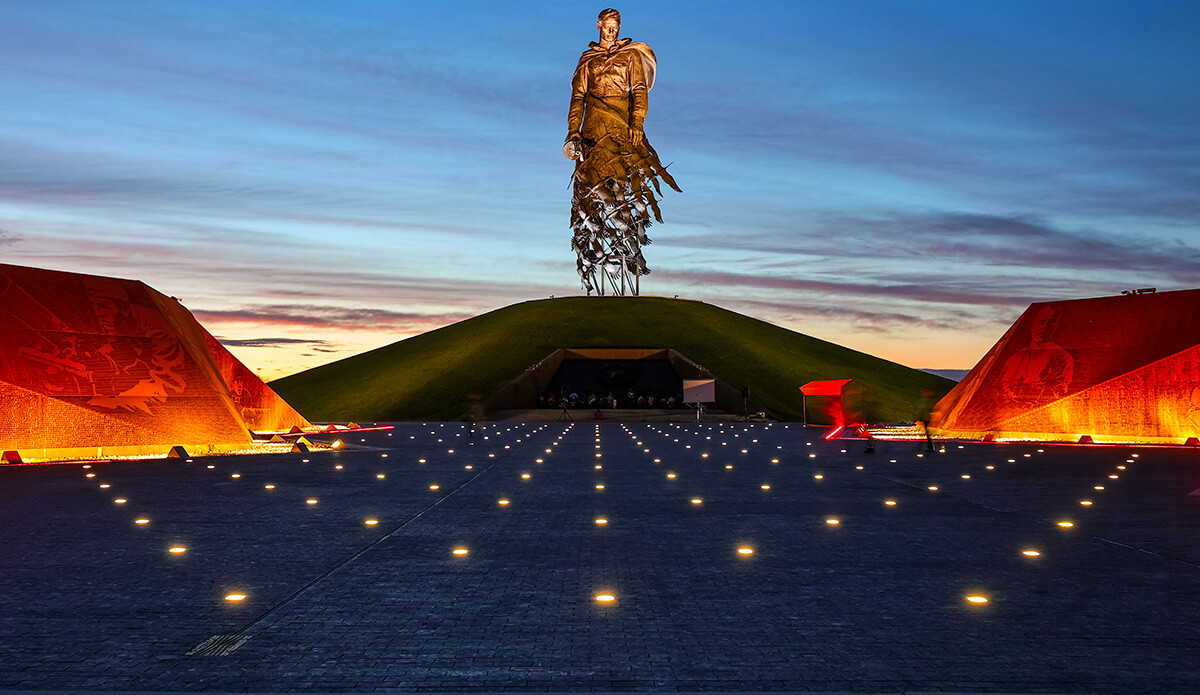
The town of Rzhev is located 120 km from Tver. From October 1941 to March 1943, some of the bloodiest battles of World War II, including the ‘Battle of Rzhev’, took place there (you can read more about the battle here). Soviet troops lost more than 1.3 million men, including wounded, missing in action and taken prisoner.
A memorial to the soldiers who fell in the battle was inaugurated in Rzhev in June 2020. At the center of the composition is a 25-meter bronze statue of a Soviet soldier whose trench coat "morphs" into a flock of cranes. The reference is to one of the most popular and poignant songs about the war titled: 'Zhuravli' ('Cranes'). It was composed by Yan Frenkel to lyrics by Rasul Gamzatov.

Lovers of outdoor recreational activities should visit the shores of Seliger at least once in their life! This huge (260 sq. km) lake of glacial origin is home to about 30 species of fish. Hence, fishermen go there at all times of year and fish from boats, from the shore and, in winter, through ice-holes.
The winding shoreline of the lake has a multitude of different hotels and campsites (as well as glamping sites), so anyone can stay there according to their preferences. And you can jump straight into the lake from the banya (bathhouse)!
One of Seliger's landmarks is the charming town of Ostashkov, the largest on its shores.. Its key attractions include a Soviet local history museum, which is housed in a former church.
You can also take a ride on a retro train along the Seliger - Ostashkov - Bologoye route.
Seliger train
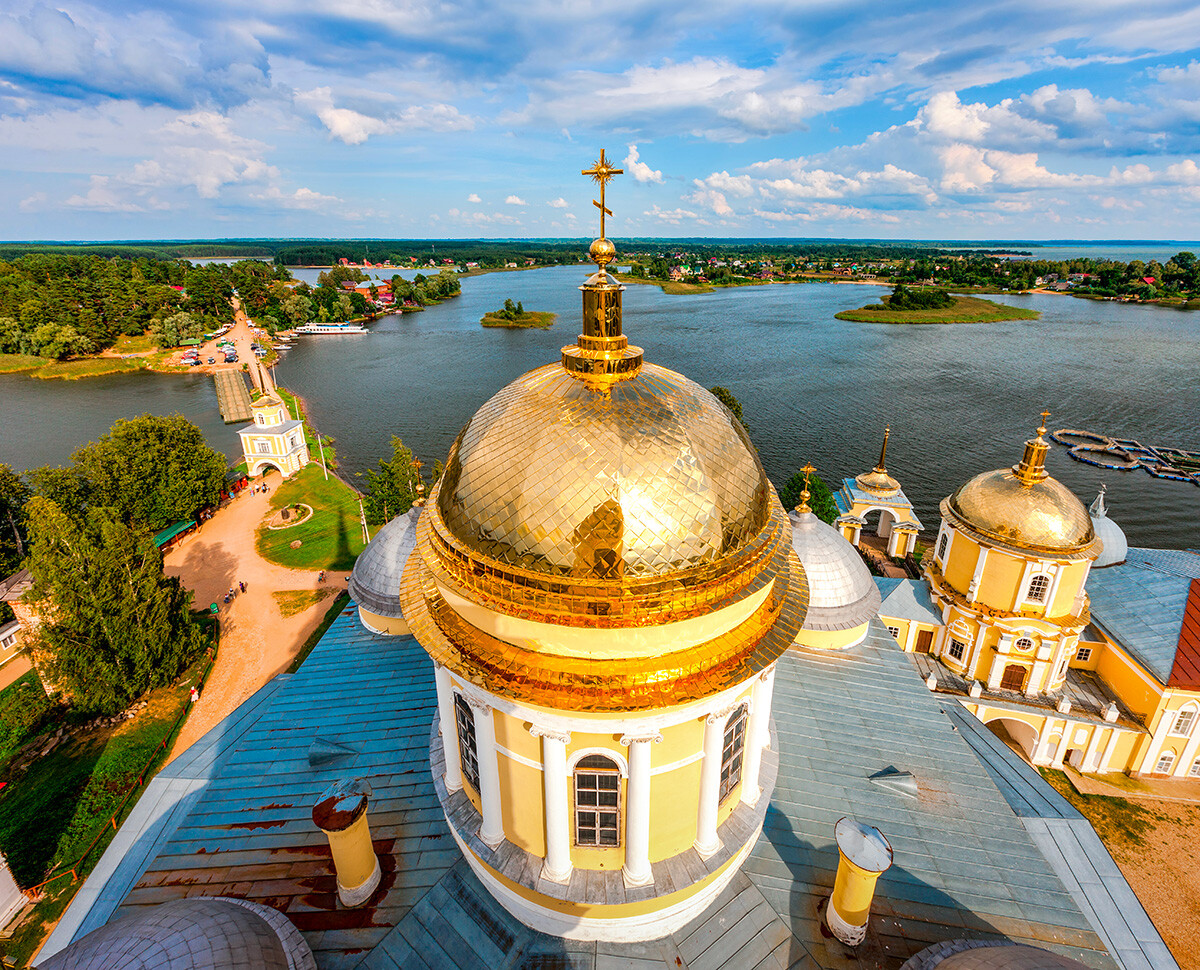
One of the main attractions in Tver Region is the Nilov Monastery, founded in the 16th century. This functioning monastery is also situated on the picturesque shores of Lake Seliger. In Soviet times, it housed a colony for young offenders, a prisoner-of-war camp, a hospital and a tourist hostel…
According to legend, a hermit monk named Nil, famous for his diligent prayer, settled on the island of Stolobny on the lake. It was said that no calamities or robbers could force him off the island. After he died, other monks began to go to where his cell had stood and, eventually, they founded a monastery there. Before the Bolshevik Revolution, it was one of the most revered monasteries: Thousands of pilgrims used to visit it to worship the relics of the Venerable Nil. As part of the project ‘Russia: 85 Adventures’, we filmed a video at the monastery – you can watch it here.

If, in Torzhok, you've time to eat,
Pozharsky's is the place to know.
Their cutlets, fried, are such a treat,
Then after lunch you'll lightly go!
So wrote Alexander Pushkin, who frequently traveled from St. Petersburg to Moscow to see his friend Sergei Sobolevsky. Thanks to Russia's most outstanding poet, ‘Pozharsky cutlets’ – patties of ground chicken coated in white bread croutons – became the town's most famous speciality. And they remain its calling card to this day.

But, the town is famous for more than just gastronomy. The once major trading center has, today, evolved into a charming provincial town. Things to see include the picturesque scenery along the banks of the River Tvertsa, the Saints Boris and Gleb Monastery, which is virtually the oldest monastery of Ancient Russia (believed to have been founded in 1038), and the unique, wooden 17th-century Old Church of the Ascension.

One of the region's most famous sights is the flooded bell tower of Kalyazin. The 74-meter tower protrudes out of the water not far from the shores of a reservoir. Tourists who take pictures of it are sometimes oblivious of the fact that the ruins of a once-flourishing monastery lie hidden under the water.
Most of the Makaryev Monastery of the Holy Trinity was demolished in 1940, ending up in the flood zone of the Uglich hydroelectric power station on the Volga River and the Uglich Reservoir. What remains now as a reminder of the monastery are the bell tower, which was recently restored and re-whitewashed and also a set of frescoes miraculously rescued from the monastery. You can read more about them here.

It's hard to believe that this spring and stream in the Valdai Heights are the place where one of the world's biggest rivers (and the biggest in Europe) rises. Next to the spring stand a chapel and a footbridge with a plaque – an ideal spot for a souvenir selfie!
In Ancient Rus’, the River Volga was always held in special esteem – it was described as “Mother Volga”, a multitude of towns were built along it and it provided food for a large number of Russian regions and continues to do so to this day. This is why pilgrimages have been made to its source for several centuries now. Back in the 17th century, a monastery stood there, but it burnt down and was never restored. A new one was, however, built in 1912 – the Olginsky Convent.

This spot on the shores of Lake Vselug (today part of the Volga River) is dubbed the "Kizhi of the Tver Region". Like the famous Kizhi on Lake Onega, Shirkov Pogost is of interest because of its multi-tiered wooden church – in this case, the church of John the Baptist, a masterpiece of Russian wooden architecture, which was built in 1697.
According to one legend, the Pogost was named in honor of the Shirkov brothers, merchants who had the church built. They were taking two icons of John the Baptist from Novgorod to Moscow. On this spot, they laid down the sacred images and decided to rest, but they could not pick them up again – and, so, decided to build a church there without using a single nail!
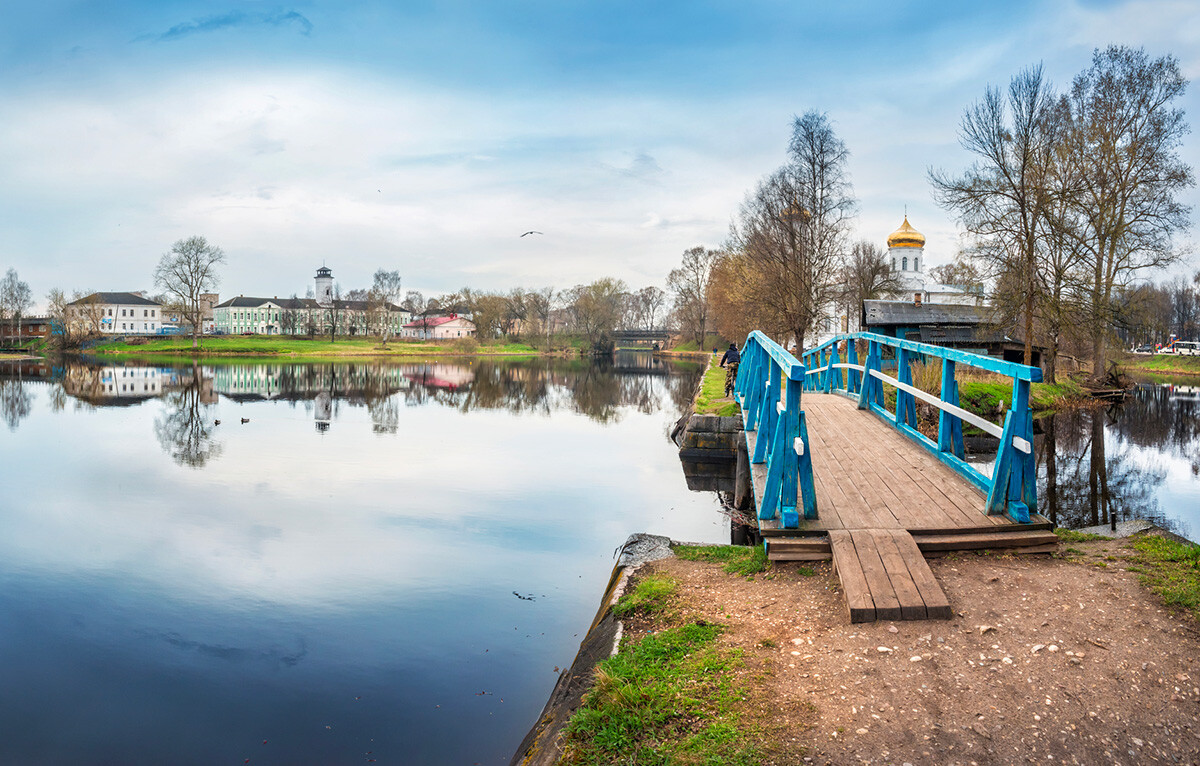
The town got its name from the word ‘volok’ (‘portage’) – in other words, various watercraft were carried across a section of dry land between two bodies of water there. True enough, Vyshny Volochyok was on the watershed of the basins of the Baltic (Tsna River) and the Caspian (Tvertsa River, a tributary of the Volga). Under Peter I, the first artificial canal in Russia was built between the two rivers.
Vyshny Volochyok was always an important staging post on the route from Moscow (and Central Russia) to St. Petersburg. Because of its convenient location, there were many factories and production plants there, from garment factories to glass and woodwork facilities. Volochyok is also famous for the manufacture of ‘valenki’ (‘felt boots’) and it even has a museum devoted to this footwear and to the art of wool hand felting.
A host of old factory buildings, as well as houses that once belonged to affluent merchants in a great variety of styles, have survived in the town. A roadside imperial palace was also built there, which, today, houses a school.

Until 1929, the village was called Kuznetsovo, after which it was renamed in honor of Porfiry Konakov, a participant in the 1905 Russian Revolution. The area is famous for its china. The Konakovo Pottery Factory was founded as early as 1809 and is one of the oldest in Russia. It is no longer in operation, but local craftspeople are using the legacy of its artistic workshop to revive production today. Items can be bought as a souvenir in Tver Region.
But, today's tourists know the location more as a fashionable riviera. Konakovo and nearby Zavidovo are popular places for recreational activities and water sports. People go sailing, wakesurfing and wakeboarding and there are a multitude of hotels and glamping sites for holiday stays. And the close proximity to the M11 motorway makes the location even more attractive (particularly to Muscovites, who can get there in just over an hour!).
Dear readers,
Our website and social media accounts are under threat of being restricted or banned, due to the current circumstances. So, to keep up with our latest content, simply do the following:
If using any of Russia Beyond's content, partly or in full, always provide an active hyperlink to the original material.
Subscribe
to our newsletter!
Get the week's best stories straight to your inbox